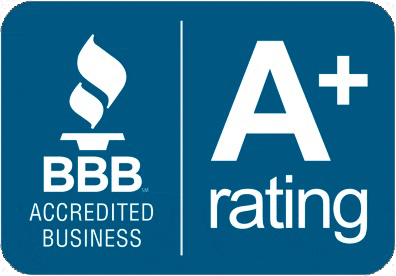Ransomware Recovery for Manufacturers
by Jon Lober | NOC Technology
What to Do in the First 72 Hours After an Attack
Your production line just stopped. Every screen in the plant displays the same message: "Your files have been encrypted." Your stomach drops. You've now joined the 65% of manufacturers hit by ransomware recently. The next 72 hours will determine whether you're back online in days or weeks.
If you're reading this during an active ransomware attack, skip to the "Hour 1-4: Immediate Response" section below. For everyone else, understanding these critical first three days could save your company millions.
The Brutal Reality: Why the First 72 Hours Matter
Companies take an average of 21 days to fully restore operations after a ransomware attack. But here's what most people don't know: the decisions you make in the first 72 hours determine whether you're in that 21-day average or the fortunate 15% who recover within a week.
The clock starts ticking immediately. Every hour of downtime is very costly for US manufacturers– ranging from $427/minute on the low end up to $900/minute for larger manufacturers (and even more for automotive manufacturing). These staggering costs come not from the ransoms themselves (which can range from $450,000 to $1.2M) but from lost production, expedited shipping to meet contracts, and overtime labor.
Manufacturing requires everything to work, unlike other industries that can limp along on partial systems. Your ERP can't schedule production without the MES. The MES can't execute without the SCADA systems. The SCADA can't run without the PLCs. It's all or nothing.
Hour 1-4: Immediate Response (Stop the Bleeding)
1. Isolate First, Ask Questions Later
Disconnect from the network immediately. This means:
- Physically unplug ethernet cables from infected machines
- Disable WiFi on all devices
- Disconnect your backup systems (if they're not already compromised)
- Isolate but DON'T POWER OFF infected machines (you'll need them for forensics)
2. Activate Your Incident Response Team
If you don't have one, here's your emergency roster:
- IT Manager or most senior IT person
- Plant Manager
- CFO (they'll need to handle insurance and potential ransom negotiations)
- HR Director (for employee communications)
- Your insurance agent
- Legal counsel (preferably one familiar with breach notification laws)
- Your MSP or IT support company
3. Document Everything
Start an incident log immediately. Note:
- When the attack was discovered
- Which systems are affected
- Who discovered it
- What actions you've taken
- Screenshots of ransom notes (use a phone camera if necessary)
This documentation is critical for insurance claims and potential law enforcement involvement.
4. Identify the Variant
Take photos of the ransom note and encrypted file extensions. Different ransomware variants require different approaches. Send these to your IT team or MSP immediately. Websites like ID Ransomware can help identify the variant, which determines:
- Whether decryption tools exist
- How the ransomware spreads
- What data might have been stolen
Hour 4-24: Assessment and Stabilization
1. Check Your Backups (But Don't Restore Yet)
Critical: Do NOT connect your backup systems to the network yet.
Modern ransomware specifically targets backups. It may lie dormant for days or even weeks encrypting your backup files. It is crucial that you check:
- If your offline/air-gapped backups are intact
- How recent your clean backups are
- That you have backups of your SCADA configurations and PLC programs
- If your backup credentials different from your main network
2. Assess Critical Systems Priority
Once you’ve assessed your backups, create a recovery priority list.
Tier 1 (Production Critical):
- Domain controllers
- ERP core systems
- MES/MOM systems
- SCADA servers
- Critical PLC configurations
Tier 2 (Business Critical):
- Email servers
- File servers
- Quality management systems
- Inventory management
Tier 3 (Important but not critical):
- Individual workstations
- Training systems
- Non-critical applications
3. Contact Your Cyber Insurance
Call your cyber insurance carrier immediately. Most policies require notification within 24-48 hours. They'll typically provide:
- Incident response specialists
- Forensic investigators
- Ransom negotiators (if needed)
- Legal counsel
- PR crisis management
Important: Don't admit fault or speculate about causes when talking to anyone, including your insurance company. Stick to the facts.
4. Implement Emergency Operations
While IT works on recovery, operations needs workarounds:
- Can you run manual production schedules?
- Do you have paper forms for quality checks?
- Can shipping/receiving operate offline?
- What customer orders are at risk?
When the cloud-based software company CDK suffered a ransomware attack in 2024, the company’s clients (US auto dealerships) were forced to utilize manual, paper-based data entry for everything from payroll to CRM to sales.
Hour 24-72: Recovery Decisions
1. The Ransom Decision
By day 2, you'll face the hardest decision: will you pay the ransom or rebuild your data? There are a few factors to consider as you face this choice.
- Only 65% of manufacturers who pay get their data back
- Of those, only 8% recover ALL their data
- Payment doesn't guarantee decryption keys work
- You might be sanctioned for paying certain groups
- Paying makes you 80% more likely to be hit again
The real question: Can you rebuild faster than negotiating and decrypting? With good backups, the answer is usually yes.
2. Begin Forensic Investigation
Whether you pay or not, you need to understand how the criminals infiltrated your network in the first place. Check all systems for:
- Unpatched remote access tools
- Compromised credentials
- Phishing emails
- Vulnerable internet-facing SCADA
This investigation isn't about placing blame – it's about preventing reinfection. The last thing you want is to work to restore your systems only to be hit again through the same vulnerability two weeks later.
3. Start Clean Room Recovery
If you have chosen to rebuild rather than pay out the ransom, you need to begin your recovery by creating an isolated recovery environment. From there, you can:
- Rebuild systems from known-clean backups or fresh installs
- Patch everything before bringing it back online
- Reset ALL credentials (including service accounts, SCADA passwords, PLC credentials)
- Implement additional monitoring before going live
4. Communication Planning
By hour 48, you need clear communications for:
Employees:
- What happened (basics only)
- When systems might be restored
- Temporary procedures
- Who to contact with questions
Customers:
- Potential delivery delays
- Order status updates
- Alternative contact methods
Suppliers:
- Receiving delays
- Payment processing issues
- EDI/portal outages
Authorities:
- FBI IC3 report (required for insurance)
- State breach notifications (if personal data was involved)
- CISA notification (voluntary but helpful)
Day 3 and Beyond: Preventing Round Two
The Hard Truth About Recovery
Even with perfect execution, like with any major infection, you should expect that recovery will take time.
- 5-7 days minimum for core system restoration
- 2-3 weeks for full operational recovery
- 30-45 days for complete normalization
- 6 months of increased security monitoring
Your New Security Minimums
If you do nothing else after recovery, you must implement these new minimum security measures.
- Segregate IT and OT networks – Your corporate network should never directly touch your production network
- Implement offline backups – True air-gapped backups that ransomware can't reach
- Enable MFA everywhere – Especially on remote access tools and admin accounts
- Patch monthly – Set a recurring date for all updates
- Security awareness training – 91% of attacks start with a phishing email
The Questions You're Really Asking
- "Should we just pay the ransom and move on?" Paying might seem faster, but it averages 8 days just to get decryption keys, then another week to decrypt everything— IF the bad guys give you valid keys. With good backups, you can often rebuild faster. Plus, paying funds criminal operations and makes you a target for repeat attacks.
- "How do we keep production running during recovery?" Document manual procedures now, before you need them. Can you run one production line manually? Can quality operate with paper forms temporarily? The plants that recover fastest have manual fallback procedures ready.
- "What if we don't have the expertise to handle this?" Most manufacturers don't. That's why cyber insurance is critical – they provide the experts. If you're reading this during an attack without insurance, consider emergency incident response services. Yes, they're expensive ($2,000-$5,000 per day), but that is far less than extended downtime.
- "How do we explain this to customers?" Be honest but brief: "We experienced a cybersecurity incident that temporarily affected our systems. We've isolated the issue and are working with cybersecurity experts to restore operations safely. Your data/orders/specifications remain secure, and we'll update you daily on our progress."
Your 72-Hour Checklist
We’ve put together a full 72-hour response checklist that you can use to build your recovery plan. Print several copies of this, keeping it with essential personnel and in your emergency response binder.
The Bottom Line
Ransomware recovery in manufacturing isn't just about restoring data – it's about rebuilding an entire production ecosystem to limit the hourly hemorrhaging. The manufacturers who recover fastest aren't necessarily those with the best technology; they're the ones who make decisive moves in the first 72 hours.
If you're reading this before an attack: prepare now. Create an incident response plan, verify your backups weekly, and segregate your networks. The 65% attack rate on US manufacturers last year means it's not if, but when you are attacked.
If you're reading this during an attack: stay calm, follow the checklist, and remember that even the worst ransomware attacks are survivable. We've helped manufacturers recover from complete encryption, and they're now running stronger than before.
The first 72 hours are hell, but they don't define your outcome – your preparation and response will.
Need immediate ransomware recovery assistance?
Contact a specialized manufacturing incident response team who understands both IT and OT environments. Every hour counts, but with the right approach, you can minimize damage and get production running again.




